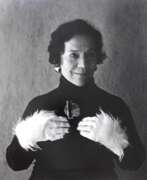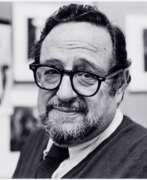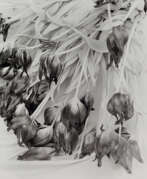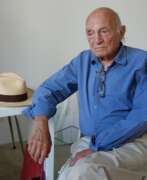Still life Black & white photo


Valérie Belin is a French art photographer. She lives and works in Paris.
Her work takes the form of photographic series. In the 2000s she started using digital post-production tools which gave her greater freedom to change and control the chromatic values of the prints. She now produced her first series in colour. In 2009 Belin began to use other kinds of digital manipulation, heightening the hybrid, graphic and artificial dimension of her work. These include solarisation and overprinting. Since then, she has also worked with other abstract vectorial forms, like digital "readymades" found on the internet, which she reworks on the computer, melding them with her images.
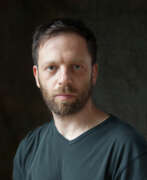

Ori Gersht is an Israeli photographer and video artist. He is known for his use of photography and video to explore themes of memory, history, and conflict.
Gersht's work often involves the use of slow-motion and high-speed video, which allows him to capture the ephemeral and fleeting moments that are often overlooked in daily life. He also uses a range of photographic techniques, including still life and landscape photography, to create images that are both beautiful and haunting.
Some of Gersht's most famous series include "Time After Time," which captures the moment of a bursting flower, and "Liquidation," which explores the destruction of historical objects. He has also created video installations that examine the history and memory of the Holocaust.
Gersht's work has been exhibited in major museums and galleries around the world, and he has received numerous awards and honors for his contributions to the field of photography and video art. He continues to produce new work and is widely regarded as one of the most important contemporary artists working today.
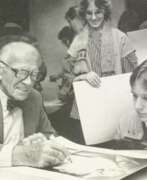

Horst P. Horst, a German-American fashion photographer, is renowned for his significant contributions to the art and fashion industry. Born in 1906, Horst's career spanned several decades, during which he became famous for his distinct style that skillfully blends elements of surrealism, classicism, and avant-garde artistry. His work, characterized by meticulous preparation and an innovative use of lighting, frequently avoided the use of filters and shadows, focusing instead on the subject with an almost architectural precision.
Horst P. Horst's legacy in fashion photography is underscored by his famous portraits, including the iconic 1942 image of Marlene Dietrich, and his exploration of the high society lifestyle through his collaborations with Vogue editor Diana Vreeland. These projects featured portraits of illustrious figures from the realms of royalty, art, fashion, and high society, such as Andy Warhol, Jacqueline Kennedy Onassis, and Yves Saint Laurent, showcasing Horst's ability to navigate the glamorous and intimate worlds of his subjects.
His work extended beyond portraiture to include interior design photography, as seen in his documentation of notable interiors for magazines like House & Garden and Vogue. Horst's photographs often served as a bridge, introducing the public to the works of contemporary artists and designers through his editorial and commercial assignments.
Throughout his career, Horst received critical acclaim, with major retrospectives of his work being held at prestigious venues such as the International Center of Photography in New York, the Louvre in Paris, and the National Gallery in London. These exhibitions highlighted his contributions to fashion, portraiture, and art photography, cementing his status as one of the most influential photographers of the 20th century.
For those interested in the evolution of fashion photography and the intersection of art and culture, Horst P. Horst's work remains a significant point of study and admiration. Collectors and experts in art and antiques are encouraged to explore his extensive portfolio, which continues to inspire and influence the fields of photography and fashion design.
If you wish to stay informed about upcoming sales and auction events related to Horst P. Horst, consider signing up for updates. This subscription will ensure you're at the forefront of the market for his enduring and captivating works.
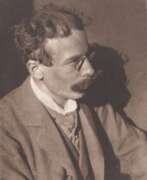

Carl Christian Heinrich Kühn was an Austrian–German photographer and photography pioneer.
Heinrich Kühn is regarded one of the forefathers of fine art photography, the movement that helped photography to establish itself as an art on its own. His photographs closely resemble impressionist paintings, with their frequent use of soft lighting and focus. Kühn was part of the pictorialist photographic movement.
Kühn mainly used the gum bichromate technique, applied in several layers, and thus allowing for previously unseen color tonalities.
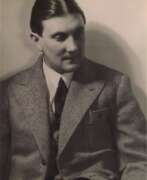

Jindřich Štyrský was a Czech artist, photographer, poet, and writer. He is best known for his contributions to the Surrealist movement in Czechoslovakia during the 1930s and early 1940s.
Štyrský initially trained as a painter, but he soon became interested in photography and began experimenting with the medium in the early 1920s. He became associated with the Czech Surrealist Group in the mid-1930s and became one of its leading figures, alongside fellow artist and writer Toyen.
In addition to his photography, Štyrský was also a prolific writer and poet. He published several books of poetry.
Štyrský's photography is characterized by its surreal and dreamlike qualities, often featuring distorted figures and strange juxtapositions of objects. He also produced a series of photomontages, which combined different photographic elements to create unsettling and enigmatic images.
During World War II, Štyrský was persecuted by the Nazi regime for his art and writings. His work has since been recognized for its contribution to Surrealism in Czechoslovakia and its unique blend of photography, painting, and literature.
